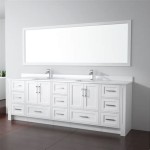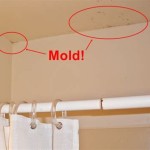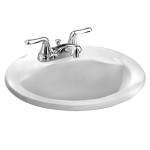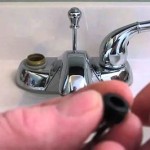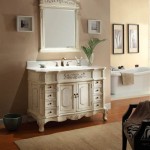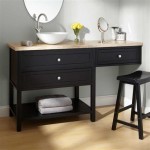How To Get Rid Of Little Black Ants In Bathroom
Little black ants, scientifically known as Monomorium minimum, are a common nuisance in households, particularly in bathrooms. Their small size, preference for sugary and greasy substances, and ability to nest in concealed locations make them challenging to eradicate. The presence of moisture and readily available food sources, such as soap residue, spilled toiletries, and even dead insects, often attracts these ants to bathrooms. Effective ant control requires a multifaceted approach that combines proper sanitation, identification of entry points, and the use of appropriate treatment methods.
The initial step in eliminating little black ants involves understanding their behavior and identifying the source of the infestation. These ants typically forage in trails, following pheromone paths laid down by scout ants. Observing these trails can lead to the nest or entry points, which are crucial for targeted treatment. Common entry points include cracks in walls, gaps around pipes, and openings around windows or doors. Locating the nest is essential for long-term control, as simply killing the visible ants will not eliminate the colony.
Identifying and Eliminating Food and Water Sources
Little black ants are attracted to both food and water. Bathrooms offer a constant source of moisture and occasional food sources, making them an ideal environment for these pests. Addressing these attractants is a primary step in preventing and controlling infestations.
Regular cleaning is vital to removing potential food sources. This includes wiping up spills, removing soap scum buildup, and cleaning drains to eliminate organic matter. Special attention should be paid to areas around sinks, toilets, and showers, as these areas are prone to moisture accumulation and food debris.
Reducing humidity can also deter ants. Ensure proper ventilation in the bathroom by using exhaust fans during and after showers. Repairing leaks in pipes or fixtures will eliminate standing water sources. Consider using a dehumidifier if the bathroom is consistently damp.
Storing toiletries and cleaning products in sealed containers will prevent ants from accessing these potential food sources. Regularly inspect under sinks and behind toilets for any signs of leaks or moisture that could attract ants.
Effective sanitation practices are not only crucial for eliminating existing infestations but also for preventing future ones. By consistently removing food and water sources, the bathroom becomes less attractive to little black ants, reducing the likelihood of re-infestation.
Sealing Entry Points and Preventing Access
Preventing little black ants from entering the bathroom is a critical aspect of long-term control. These ants can squeeze through incredibly small cracks and crevices, making it essential to meticulously seal all potential entry points.
A thorough inspection of the bathroom is necessary to identify any cracks, gaps, or holes. Pay close attention to areas around pipes, windows, doors, and the foundation of the building. Use caulk or sealant to close these openings, preventing ants from accessing the bathroom from outside.
Weather stripping around doors and windows can also help to prevent ants from entering. Ensure that the weather stripping is in good condition and properly installed. Replace any damaged or worn-out weather stripping to maintain a tight seal.
For larger gaps or holes, consider using expanding foam insulation. This product can fill voids and create a barrier that prevents ants from entering. Be sure to trim and paint the foam after it has dried to improve its appearance.
In addition to sealing entry points, consider creating a barrier around the perimeter of the bathroom using insecticidal dust. This powder can be applied to cracks and crevices, killing ants as they attempt to enter. However, caution must be exercised when using insecticides, particularly in areas accessible to children and pets.
Regularly inspecting and maintaining these seals is crucial. Over time, caulk and sealant can deteriorate, creating new entry points for ants. By proactively addressing these issues, the bathroom can be effectively protected from ant infestations.
Treatment Options for Little Black Ants
When preventative measures are not enough, various treatment options can be employed to eliminate little black ants from the bathroom. These treatments range from natural remedies to chemical insecticides, each with its own advantages and disadvantages.
Baiting is often the most effective method for controlling little black ant infestations. Ant baits contain a slow-acting poison that ants carry back to the colony, ultimately killing the queen and other members. Place ant baits in areas where ants have been observed foraging, such as along trails or near entry points. It is essential not to disturb the ants while they are feeding on the bait, as this can deter them from returning.
Several types of ant baits are available, including liquid baits and gel baits. Liquid baits are particularly effective for little black ants, as they are attracted to the sugary solution. Gel baits can be applied to cracks and crevices, providing a targeted treatment for ants nesting in hard-to-reach areas.
Natural remedies can also be used to control little black ants. Borax, a naturally occurring mineral, is toxic to ants when ingested. Mixing borax with sugar and water creates a homemade ant bait that is both attractive and lethal. Place the borax solution in shallow containers or on cotton balls near ant trails.
Diatomaceous earth (DE) is another natural option. This powder is made from fossilized algae and is abrasive to the exoskeletons of insects. Sprinkle DE around entry points and ant trails to kill ants as they walk through it. Use food-grade DE, as pool-grade DE can be harmful to humans and pets.
For severe infestations, chemical insecticides may be necessary. These products come in various forms, including sprays, dusts, and granules. When using insecticides, it is crucial to follow the manufacturer's instructions carefully and to take precautions to protect yourself and others from exposure. Insecticides should be used as a last resort, after other methods have failed.
Regardless of the treatment method chosen, consistency is key. It may take several weeks to eliminate an ant infestation completely. Regularly monitor the treated areas and reapply treatments as necessary.
In addition to these direct treatment methods, consider addressing any underlying issues that may be contributing to the infestation. For example, if the bathroom has a persistent moisture problem, fixing the leak or improving ventilation will help to prevent future infestations. By combining targeted treatments with preventative measures, little black ants can be effectively eliminated from the bathroom, creating a clean and pest-free environment.

Boise Idaho Pest Control Pestcom

How To Get Rid Of Little Black Ants In Your Bathroom Housekeeping Wonderhowto

How To Stop Ants From Invading Your Bathroom Identification And Prevention Tips Tabor Pest Control

Niagara Pest Control Why Are There Carpenter Ants In The Bathroom

Boise Idaho Pest Control Pestcom

How To Get Rid Of Sugar Ants John Moore Services

How To Get Rid Of Tiny Black Ants Clegg S Pest Control

11 Simple Ideas To Kill Ants In The Bathroom

How To Get Rid Of Black Ants The Happy Housewife Home Management

How To Get Rid Of Black Ants The Happy Housewife Home Management
Related Posts

